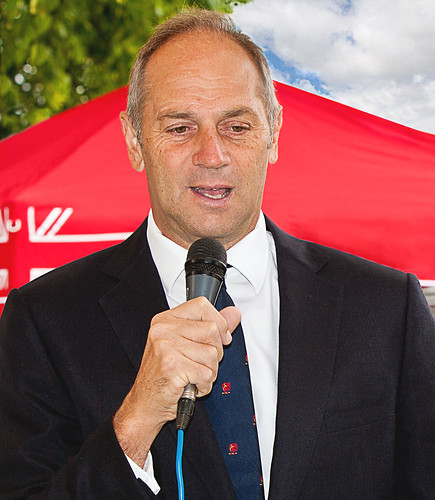
Sir Steve Redgrave – Winner of five Olympic Gold Medals
Great sportsmen inspire and so does great photography
The wonderful Olympic events in London this week has me reflecting on sports photography. I have learned some great lessons from watching television sports. I want to share some of these with you. They may not be what you expect.
Watch Television to improve your photography
Great technology and improvements in the quality of live video photography have produced some superb sports coverage. Today, there were some fantastic shots from the long jump competition. Watching these shots in high definition and slow motion was instructive. The best shots were taken from slightly below the level of the jumpers in the air and watching them come toward the camera. The camera was able to look up into the stadium and directly at the jumper coming toward them. It brilliantly captured the power of the jump and the power of the audience. A great upshot with a great backdrop. It shows that a near ground-level upshot can have strong visual power. Worth exploring further.
I have also enjoyed the high definition, slow motion photography in the Olympic Velodrome in London. Cycling is a great sport to photograph. Watching the champion-standard performances was amazing enough. But the composition of the video of the moving cyclists was phenomenal. The best shots were taken from just below and alongside the body-line of the cyclists. They had partially visible faces and we saw the entire action of each cyclic leg motion in full view. A great composition. The best shots were along a line of pursuit cyclists from this angle. The pursuit cyclists in a row demonstrated the discipline and strength of a team. The composition of the shot showed the visual power of a perspective down the line. Wonderful!
One of the enduring shots I saw yesterday was a high jump. The jumper was frozen with excellent clarity. Her body was contorted, straining every ligament to clear the bar. I was struck by this shot because there was absolutely no motion blur in the shot. The situation demanded fast and committed movement. Our eyes would only see a blur if we watched. Yet, this picture had a great impact because of its clarity. Sports images often convey power through the explosion of action. The lesson here is not to try for motion blur in every shot. There is sheer beauty in combining photographic clarity and sporting prowess.
Winners are loved by everyone. As a result it is sometimes difficult to get near to them. It is also difficult to get a great picture of a jubilant winner jumping up and down in a crowd. However, strong emotions abound at sports events. So be stealthy. Those who lose have very powerful emotions and reactions. Watch out for those. Strong emotions make for a great shot. You can communicate real power in a shot where someone is overcome with negative emotional energy or the grief of failure. These displays say as much about sports events as great sporting feats.
Although we may not be video photographers there are shared lessons in composition, positioning and perspective. While there are some great moving shots, there are also some brilliant frozen shots – stills just like the ones photographers take. These are often picked from the best of a video sequence. So some really excellently composed shots come out. Watch for those!
Watching sports television we can enjoy great sporting events and some great photographic lessons. So as you watch the Olympics look at some of the shots, analyze them, take a view on composition and content. There are some inspiring pictures. There are also some great images to keep in mind for our own future shots.
Television can inspire some great photography.

